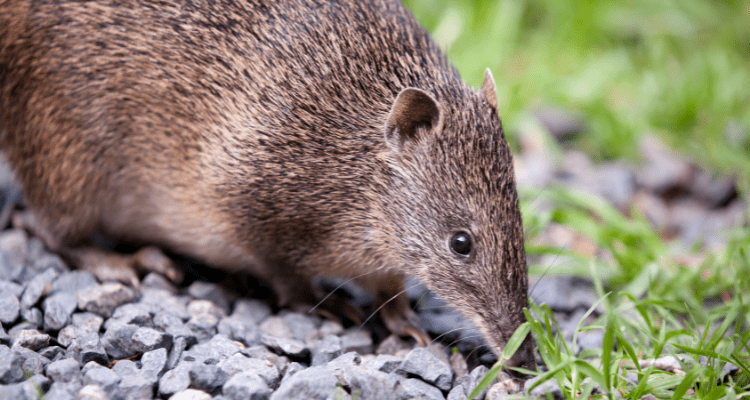Words by Tigerlily Boyce
The Northern brown bandicoot (Isoodon macrourus) is a common visitor in backyards along the east coast of Australia, often without detection. Bandicoots are noctournal and usually heard and not seen, “balloon screeching” when startled.
Sometimes, the only way to know there are bandicoots around are the numerous little holes found in the garden. Bandicoots dig in search of food, including invertebrates like worms, cockroaches and lawn grubs, lizards, berries, seeds, mice, roots and fungi which helps to control pests. They also build shallow nests covered by leaf litter to sleep in during the day, or hide in tree hollows, logs and even drainpipes. By digging, called bioturbation, they turn the soil which increases nutrient availability, spreads soil microbes and fungi crucial for healthy ecosystems, and are often considered a keystone species.
“Losing bandicoots from ecosystems would have cascading effects on plant diversity, species composition and structure of forests and woodlands” (Bush Heritage Australia).
Research suggests that “diggers” in the ecosystem – which includes potoroos, bettongs and bilbies – turning over leaves and other dry organic material can even help to reduce the risk and intensity of bushfires by decreasing fuel. Even the most common bandicoot species are experiencing population declines country wide, so it’s important to help create habitat for these “ecosystem engineers”.
Threats to bandicoots include habitat loss, roads, predation by foxes, cats and dogs, and through competition with rabbits and deer for food and habitat – without undergrowth, bandicoots are also more vulnerable to predators. Throughout history, bandicoots have been targeted by humans for being “vermin”.
In particular due to the idea that they spread paralysis ticks, although there is little evidence to suggest that they are more risk than say a dog; even birds and reptiles can be hosts.Here are few ways to create bandicoot habitat in your garden; planting native grasses and understory shrubs, leaving leaf litter, sticks and logs, making a ramp out of the pool (if you have one), and being a responsible pet owner. You can protect your veggie patch by putting up chicken wire.

Bandicoots also love foraging through compost piles, and will help to turn them over. Check out our other article to learn more about native truffle fungi that bandicoots love to eat!
Fun fact – it is estimated that a single bandicoot, in wetter months, will dig 40 holes in an hour and up to 500 in one night, equating to almost 5 tonnes of cultivated soil per year!
Sources:

